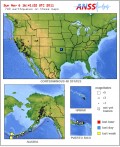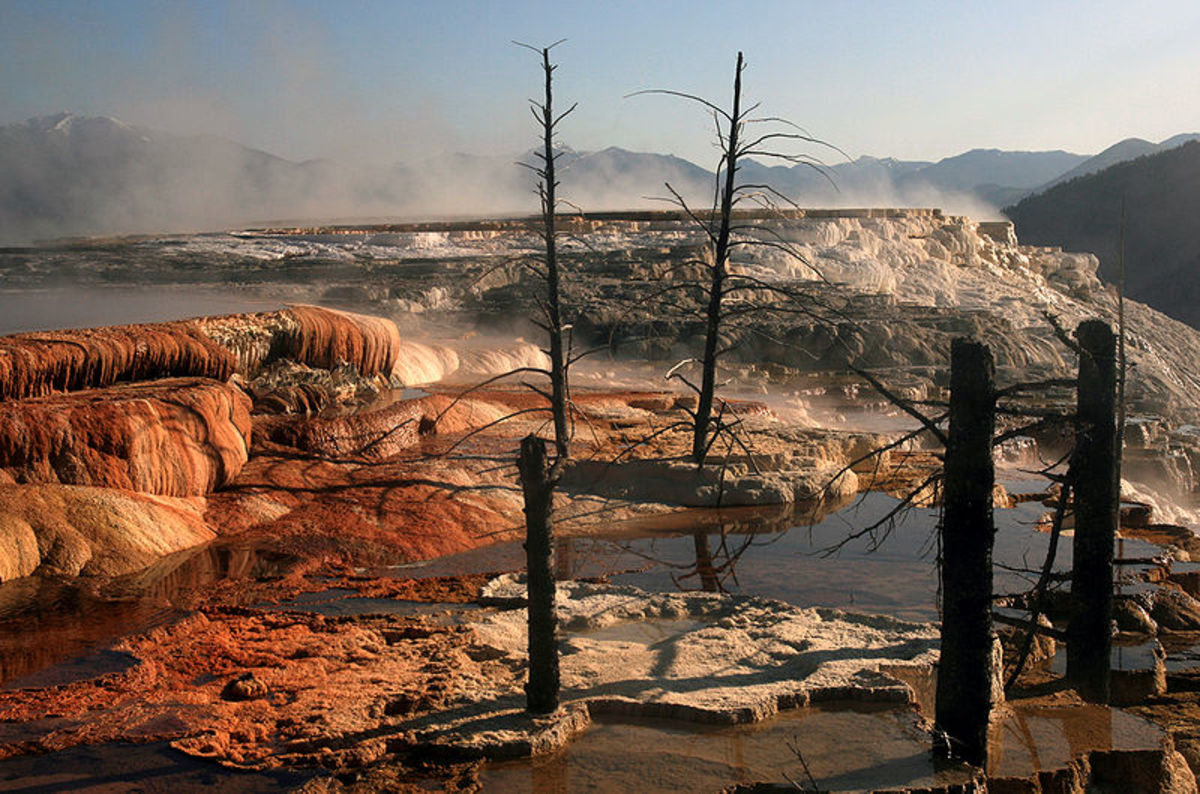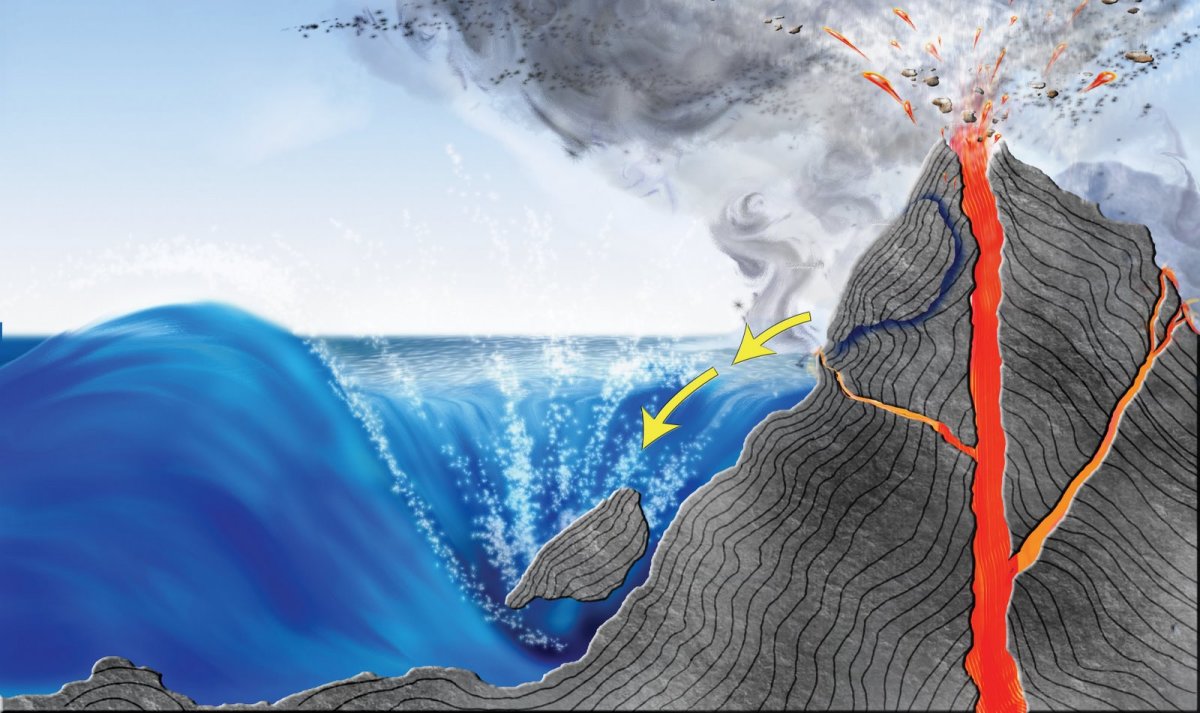Was 2012 an Average Earthquake Year? Depends on Who You Ask
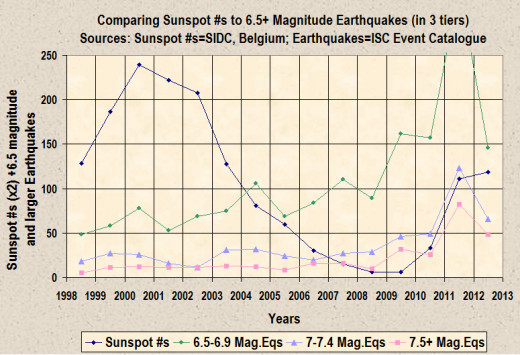
Nothing held back in UK seismic data
In an earlier hub I sized up the year 2012 as pretty much average, but that was based on mostly one source or the one that for most people in North America usually go to for information related to earthquakes. That repository of seismic data is of course the USGS, a government agency (the United States Geological Survey). The chart above is based on data that originated not from the U.S.G.S., but rather from data retrieved from the ISC web site (International Seismological Centre, On-line Bulletin, http://www.isc.ac.uk, Internatl. Seis. Cent., Thatcham, United Kingdom, 2010. ).
Although the data from December 2010 to the present has yet to be thoroughly reviewed by their team of seismologists, the difference after such review is typically small (usually amounting to removal of only a handful of duplicate or dubious event records). If one compares the graphic above to the one below, which is based on data supplied by NEIC/USGS' search page (except for the last few months of 2012 which came from the ANSS database instead since at the time that this was written the NEIC data was not available), one sees a stark contrast for the last few years.
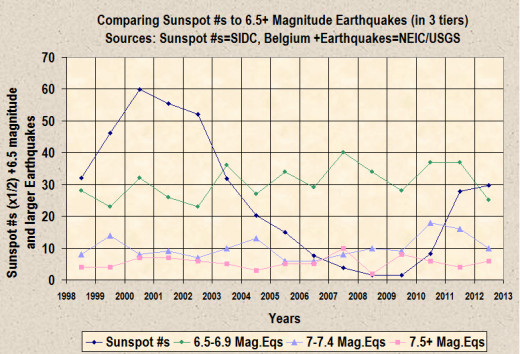
If one was to rely on the data from this second graphic, with the possible exception of a modest increase in 7.0-7.4 magnitude events in the years 2010 and 2011, one would have to say that things have looked pretty average for the last few years. Looking at the ISC data from the UK however shows that things seismically have really been picking up steam since 2009.
At first I thought that it was some kind of data anomaly of an inexplicable kind. But then I realized that only the data from late 2010 to the present hadn't been reviewed in depth by seismologists for accuracy and to remove duplications. However, as I just said, things began to heat up in the data well before that. Also the yearly earthquake numbers were well below ISC's even for all the years being reviewed before that.
One of the reasons for a significantly larger number of earthquakes in their database compared to that of NEIC's was due to it being the result of collecting data from many different sources. Yet that doesn't explain the disagreement in the figures for the years 2009 to 2012.
As I said earlier, according to the USGS source(s), nothing unusual was occurring of late. But the ISC data states emphatically otherwise.
In the graphic below is a Google Earth display of the western portion of the Pacific Ring of Fire for 2012. The source of that data is again from ISC and shows the location of earthquakes in the 7.0 magnitude or larger range.
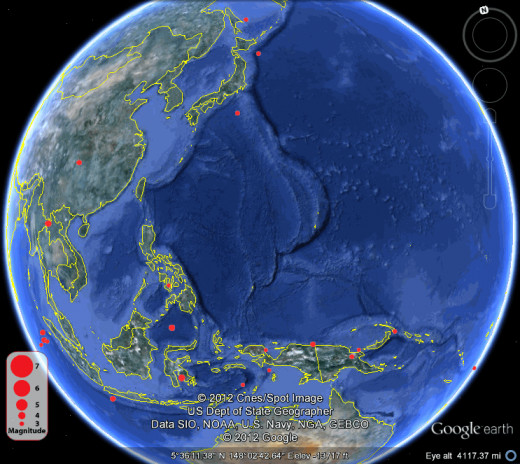
As you can see, things looked pretty active in the lower portion of that area of the globe. But if one compares the same size earthquakes given only by NEIC for the year 2012, one sees that things look considerably less active. To put it into more definite terms, the ISC data shows fifteen 7.0 magnitude or greater earthquake events in the same area that the NEIC data shows only five or a three fold difference.
But the real shocker is the difference between the two sets of data for the year 2011. That of course was the year of the Tohoku, Japanese earthquake in March of that year. As you can see in the chart at the top of this hub, due to the many aftershocks from that huge event, the number of 6.5 to 6.9 magnitude events was off the chart. For the ISC data that is. The NEIC data doesn't show anything extraordinary occurring.
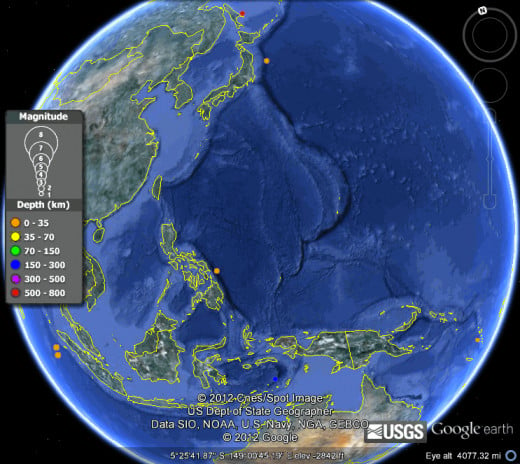
The ISC data also calls into question the reported magnitudes of the Indian Ocean/Sumatra earthquake of late December 2004 and the Japanese earthquake of March 2011. If there was such an anomalous spike in earthquakes in the 6.5-6.9 magnitude range for 2011, obviously related to that earthquake, with no similar occurrence back in late 2004 or early 2005, then the Japanese earthquake should be considerably larger on the seismic moment magnitude scale, but rather both quakes are usually assigned very similar numbers (the 12/26/04 event usually reported as being of 9.1 magnitude while the 3/11/11 event is supposed to have been of a 9.0 magnitude).
This whole thing reminds me of what the UFO believers say about the scientific and government communities in relation to their apparent lack of openness on that subject. Their reasoning of the situation is that these groups of public authorities wish not to worry the populace so they keep the alarming evidence close to their vest. It is all for the common good.
Are seismologists at the USGS who are both scientists and government employees restricted by a similar modus operandi to disavow or openly reject any knowledge that supports the notion that we should be worried?
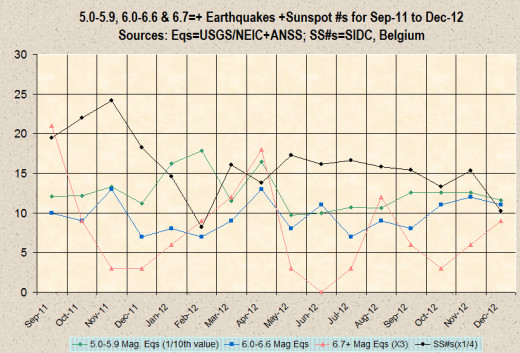
© 2012 Joseph Ritrovato


